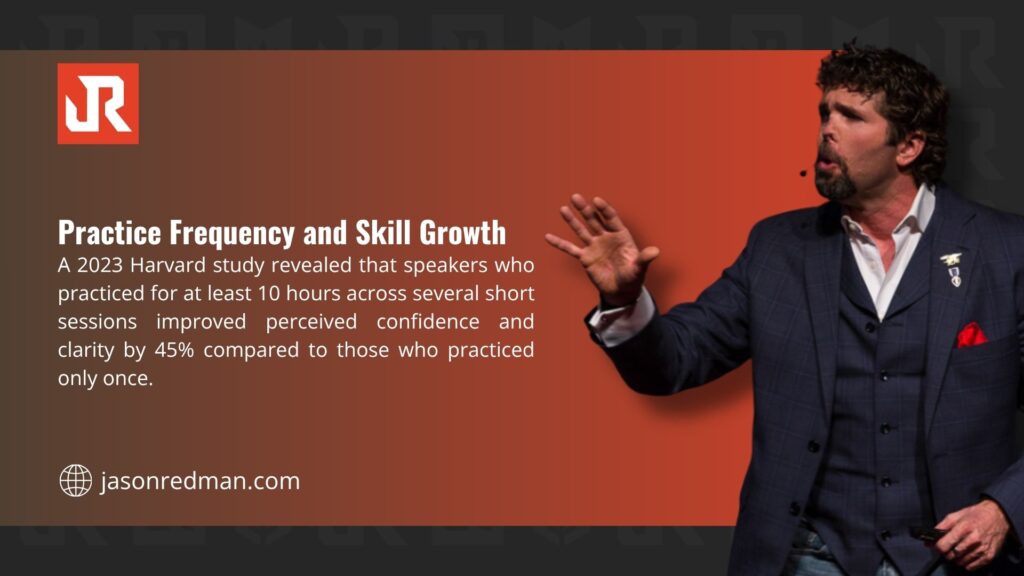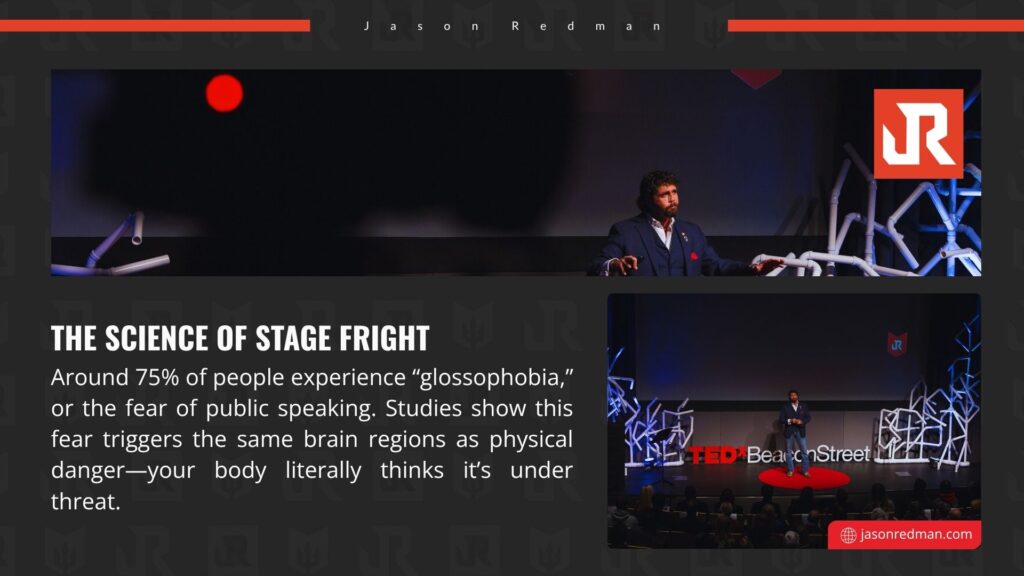Public speaking terrifies most people. Studies put the number at around 75% of the population who’d rather do just about anything else than stand in front of a crowd and talk. Some surveys even rank it above the fear of dying.
Meanwhile, 92% of business professionals say strong presentation skills directly impact career success, and poor speaking ability can knock your earning potential down by 10%.
The gap between how important public speaking is and how much people dread it creates a real problem. But what makes a good public speaker comes down to specific skills anyone can develop with the right approach.
Preparation Removes Most of the Fear
About 90% of speaking anxiety comes from being underprepared. Not genetics. Not personality type. Just not putting in enough work beforehand.
Good speakers know their material well enough to handle curveballs. Someone asks an unexpected question during Q&A? No problem. The presentation takes a different turn? They roll with it. This kind of confidence doesn’t come from natural talent rather it comes from drilling the content until it’s second nature.
Understanding the audience matters just as much as knowing the subject. What problems keep them up at night? What solutions are they looking for? Speakers who take time to research their audience can tailor messages that actually land. For anyone building these skills from scratch, established speaking techniques provide a solid starting point.
Body Language Carries More Weight than Words
Communication research shows that only 7% of a message comes from the actual words spoken. Vocal tone accounts for 38%, and body language makes up the remaining 55%. What makes a good public speaker effective is how they show up physically and vocally.
The best presentations feel like conversations. Speakers who connect with their audience notice when attention drifts and adjust accordingly. They make eye contact. They read the room. They don’t hide behind jargon or corporate speak.
Authenticity can’t be manufactured. People sense immediately when someone’s going through the motions versus genuinely caring about their message. Energy and passion spread to an audience, while detachment kills engagement fast. Anyone dealing with intense speaking anxiety should know that being genuine matters far more than being flawless.

Delivery Mechanics Separate Amateurs from Pros
Pacing makes a huge difference. Nervous speakers rush through material like they’re trying to escape. Experienced ones slow down, pause strategically, and give important points room to breathe. A few seconds of silence after a key statement lets the message sink in.
Vocal variety keeps audiences engaged. Monotone delivery, regardless of content quality, puts people to sleep. Changing volume, adjusting tone, and varying pace throughout a presentation maintains attention.
Standing rigid behind a podium signals discomfort. Natural movement, purposeful gestures, and confident posture all communicate authority. These mechanics improve with practice and genuine confidence development, not by trying to copy someone else’s style.
Key delivery elements are the following:
| Delivery Element | Impact on Audience |
| Vocal pacing | Controls information flow and maintains engagement |
| Strategic pauses | Emphasizes key points and allows processing time |
| Eye contact | Builds connection and establishes trust |
| Physical movement | Creates dynamic energy throughout presentation |
| Audience awareness | Enables real-time adjustments to maintain interest |
Managing Nerves Becomes Easier with Repetition
Even professional speakers get nervous before presentations. The difference is they’ve learned to use that adrenaline productively instead of letting it shut them down.
What makes a good public speaker is developing techniques to manage it. Some people practice breathing exercises. Others visualize successful outcomes. Many establish pre-presentation routines that help trigger focus and calm.
Starting with lower-stakes opportunities builds the foundation. Speaking up in team meetings, volunteering for small presentations, gradually increasing difficulty, this progressive approach works better than jumping straight into high-pressure situations. For more serious anxiety issues, structured training programs offer systematic support for public speaking.
Stories Connect Where Data Doesn’t
People forget statistics within minutes of hearing them. A compelling story sticks around much longer. What makes a good public speaker memorable is knowing how to weave information into narratives that resonate emotionally.
Personal experiences work particularly well because they’re authentic and relatable. The struggle, the turning point, the lesson learned – these elements create connections in ways that bullet points never will.
Strong openings matter. Skip the “Today I’m going to discuss…” approach. Start with something that grabs attention immediately, maybe a surprising statistic, a challenging question, or a story that pulls people in from the first sentence. Close with something actionable that audiences can remember and use.

Improvement Requires Consistent Practice and Feedback
Nobody becomes an exceptional speaker after one presentation. What makes a good public speaker great is treating each opportunity as a chance to refine specific skills.
Recording presentations helps identify problems that go unnoticed in the moment. Overused filler words, distracting gestures, pacing issues, watching playback reveals these patterns clearly. For systematic improvement, comprehensive development strategies provide structure to the growth process.
Studying other speakers offers valuable lessons. Watch how they handle transitions, engage audiences, or recover from mistakes. Organizations hiring outside speakers should understand what to look for during selection.
Accountability and Authenticity Define Excellence
Technical proficiency only goes so far. What makes a good public speaker truly exceptional involves character traits that can’t be faked, genuine commitment to the message and willingness to take responsibility for results.
When presentations fail, effective speakers examine what went wrong on their end rather than blaming external factors. This personal accountability drives real improvement instead of repeating the same mistakes.
Audiences detect inauthenticity immediately. Speakers who genuinely care about their topic and their audience create infectious energy that transforms presentations from information dumps into meaningful exchanges. That’s the fundamental difference between someone who speaks and someone who truly communicates.

Develop the Skills That Transform Careers
Understanding what makes a good public speaker provides the framework. Becoming one requires proven strategies and experienced guidance. Jason Redman brings leadership experience and battle-tested communication techniques that work under pressure. Check out my speaking development programs for more information.


